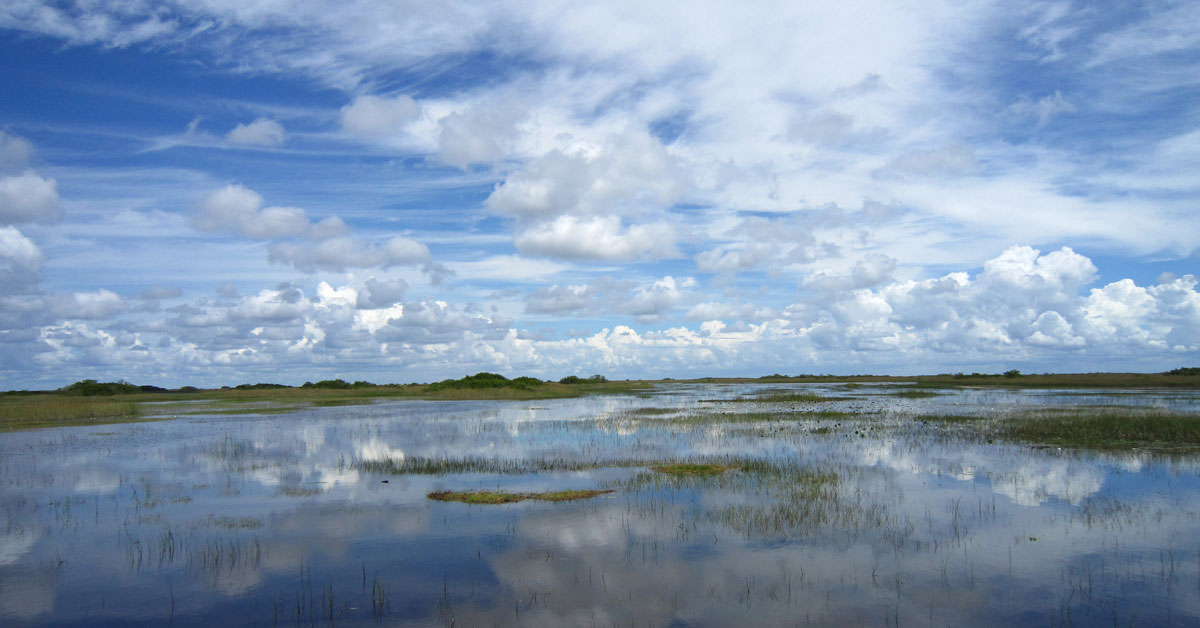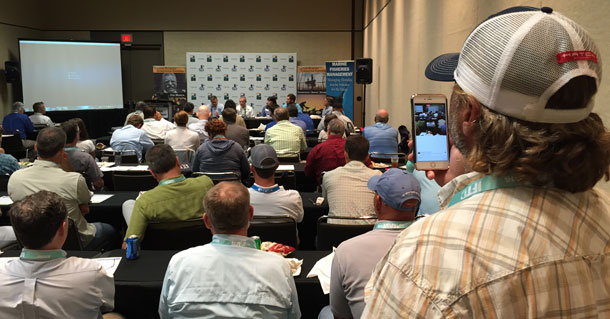While innovation was on display in Orlando, devastation wasn’t far from anyone’s thoughts
Last week’s ICAST show brought more fishing industry brands, buyers, and broadcasters to Orlando than ever before. But in a time of great prosperity for our sports nationwide, there’s a water quality crisis of epic proportions in Florida.
This is why, on day two of our Saltwater Media Summit at ICAST, the TRCP brought together the scientists, researchers, conservation leaders, businesses, and fishermen who are stepping up to figure out what Florida needs to do both short and long term to solve water pollution on the coast lines and restore the Everglades. As our Marine Fisheries Director Chris Macaluso said in welcoming the crowd of over 80 reporters, partners, and interested show attendees, it is an emotional, complex issue, and we all know that we want to do something to protect Florida’s waters wildlife and people. The trick is figuring out how to throw our weight behind the same plan to sway lawmakers and save Florida’s coast and the Everglades.
Costa’s Al Perkinson, vice president of marketing for the influential sunglasses-maker and lifestyle brand, set the stage for the issue by debuting an emotional video about the impact of development on Florida’s fisheries and the Everglades. The centerpiece of Costa’s #fixFlorida campaign, the video is narrated by angler, guide, and TV host Flip Pallot.
Dr. Steven Davis, a wetlands biologist with the Everglades Foundation, led off with a breakdown of exactly what’s causing this crisis. He explained that the areas in and adjacent to the Everglades and Florida Keys generate nearly $2 billion from saltwater angling, but much of that economic activity is being threatened by the mishandling of freshwater from the Lake Okeechobee Basin. Water that once moved south through the Everglades is now being moved via man-made canals and locks to the east, down the St. Lucie River, and to the west through the Caloosahatchee River. This is leading to fish kills, algae blooms, and thousands of lost fishing opportunities on both the west and east coastlines of Florida.
While those brackish and saltwater areas are being inundated with unnatural freshwater flows, Florida Bay, on the southern end of the Everglades, isn’t getting enough freshwater, and unnaturally high salinity levels are killing seagrass beds and other vital habitat while causing additional algae blooms. Poor water management issues are being compounded by the presence of excessive nutrients traced back to aging septic systems and farm runoff from cattle ranches and sugar cane fields.
Without long-term action to address these issues and restore habitat, many of South Florida’s most popular fishing areas face a bleak future. But Davis pointed out that two comprehensive restoration plans do exist: One is incrementally being shepherded by the state and one still requires Congressional approval to get off the ground.

“There is a comprehensive plan already under way, with a lot of components closer to completion and others ready to come online soon,” said Kellie Ralston, the Florida fishery policy director for the American Sportfishing Association. “But the plan is looking at 30 years—that’s too long. And the 50-50 split between federal and state agencies tends to slow the process down. We need to fast-track these projects and work collectively as a group. With a conservation plan waiting to be authorized by Congress, that’s something we can focus on.”
And the grassroots support is certainly there—Captains for Clean Water helped introduce the #NowOrNeverglades declaration of support for conservation and funding just a week before ICAST, and Capt. Daniel Andrews says they already have more than 13,000 signers and 200 organizations backing it. “We formed Captains for Clean Water because a lot of people were angry, but didn’t know what they could do,” said Andrews, who also showed a video that the group produced with hook manufacturer Mustad. “I grew up in South Florida, fished Florida Bay and the Caloosahatchee, and I’d seen the destruction firsthand. This is degrading the river that made me want to become a fishing guide. That’s why we want to get companies and individuals together and be part of a solution.”
There’s no research left to be done, added Dr. Aaron Adams, director of science and conservation for the Bonefish and Tarpon Trust. “It’s a statement you’ll rarely hear a scientist make, but we don’t need more data,” said Adams. “When it comes to fixing Florida’s water problem, we have actionable knowledge. It’s a political and economic issue at this point.” He explained that time is of the essence, because a lot of the affected habitat is already at a deficit: 50 percent of the area’s mangroves and 9 million acres of wetlands are already gone. “The assembly line that creates healthy habitat is already weakened,” Adams said, adding that restoration can’t begin until the water quality, flows, and storage issues are addressed. “It’s like giving a lung transplant to someone who refuses to quit smoking. If we’re going to preserve Florida as the sportfishing capital of the world, we need to fix the hydrology, reduce contaminated inputs, and then talk about restoring habitat.”
Here’s what needs to happen now:
- Plans to restore water flows and improve habitat—known as the Comprehensive Everglades Restoration Project, or CERP—need to be adequately funded and implemented, as promised.
- The Central Everglades Planning Project needs to be fast-tracked.
- Conservation dollars approved by Florida voters need to be used to purchase land south of Lake Okeechobee, which has already been identified, to create reservoirs for storing and cleaning water.
- We need to develop comprehensive strategies to reduce the amount of nutrients in the freshwater entering the estuaries—this includes curbing sewerage, septic leakage, and excessive fertilizer use.
- Natural freshwater flows, taking into account the time of year and how much water is flowing, need to be restored.
- Marshes must be restored to filter nutrients from the freshwater that is entering estuaries.
With the momentum of ICAST behind us, the TRCP is joining this coalition of engaged and enthusiastic sportsmen working to improve the Lake Okeechobee Basin. We recently hired our first-ever Florida field representative, Ed Tamson, to roll up his sleeves and work alongside the sportfishing partners, conservation leaders, grassroots advocates, and state and federal agencies trying to restore Florida’s fisheries. We welcome our new colleague Ed, and the challenge of collaborating with many different stakeholders to improve the water quality on the east and west coasts of Florida and restore the Everglades to its former glory.








A little more context is needed, I think. The algae problem is largely caused by years and years of runoff from U.S. Sugar flowing into Lake Okeechobee, raising the phosphorus level and providing a rich broth capable of supporting a huge algae bloom. Voters in Florida voted to buy the farmland south of Lake Okeechobee from U.S. Sugar to stop the pollution and route the water south, as it should flow. Even at the high cost of the land and restoration efforts, the voters chose to do this. Predictably, this was killed by Governor Rick Scott (who accepts contributions from U.S. Sugar) and his water district board members. Now lawmakers, and people running for office, are blaming the Federal Government for not giving a handout to Florida in the form of emergency funds.